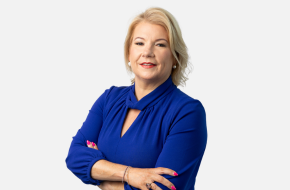By Joanne McEnteggart, Global Head of Debt, Capital Markets and Corporate, and Justin Partington, Global Head of Fund and Asset Managers
Private debt is the hottest alternative asset class, growing at 10% CAGR over the past decade and forecast to swell to $3.5 trillion by 2028. Institutional investors are clamouring to put their money in private debt, with Preqin forecasting 2023 to be the fourth consecutive year that the asset class has gathered more than $200bn of institutional commitments.
In today’s economic landscape, fundraising from retail sources is on the rise, particularly as private debt continues to yield favourable returns despite the challenges within the macro environment. Private debt stands out as a promising avenue for High-Net-Worth Individuals (HNWI) retail funds due to its liquidity benefits. Moreover, the democratisation of private markets through retail platforms further enhances accessibility to private debt opportunities. This convergence of factors not only underscores the attractiveness of private debt for retail investors but also signifies a broader trend toward diversification and democratisation within the investment landscape.
Private debt offers a wide range of opportunities across asset classes and debt seniority, each with its own returns profile, risks and nuances that need to be considered. Investors new to the asset class must get their heads around PIK notes, bullet repayments, equity warrants, and a host of other relatively technical financial terms that describe the differences between private debt strategies. In this guide, we aim to spell out what each strategy does and provide investors with an understanding of the asset class that’s set to dominate alternatives the next decade.
What is private debt?
At the highest level, private debt investments are credit extended by non-bank lenders, typically to small and medium-sized private companies. The sector really took off as a result of the Great Financial Crisis when banks’ tightened lending criteria opened the door to alternative lenders. It has recently taken centre stage as near-zero interest rates ended and banks further curtailed lending.
Private debt assets offer a reliable income stream, comparatively high liquidity and high risk-adjusted, contract-based returns. With interest rates at their current levels, the returns from private debt, which typically extends loans with floating rate coupons, are approaching equity-like returns of 10% or more, even for senior secured debt. In addition, private debt funds provide more reliable distributions and liquidity that other alternative investments.
However, the asset class offers spectrum of strategies that each approach lending differently, and here we outline these and why investors might consider each in turn.
Direct lending
Mezzanine debt
Distressed debt
Special situations
Across asset classes
So far, we’ve covered how the spectrum of private debt instruments work with investments in the debt of companies. The same investment structures exist in other asset classes and offer investors a further range of risk-reward opportunities.
Infrastructure lends itself to debt investments, with individual projects financed by lenders and servicing the debt from income it generates. Stable, inflation-hedged cash flows mean lenders can extend long-term credit and reduce risks through covenant protection. Returns from brownfield projects, being mature and in operation, are lower than greenfield, where lenders charge higher rates to compensate for taking on development risk.
In real estate, private debt invests in loans to a developer or owners of assets. Managers tend to specialise in strategies, for example residential construction, student accommodation or social housing in addition to commercial assets or retail developments. Each presents a different risk profile which, along with the stage of development, dictates the interest rates lenders offer.
Venture debt is higher risk, extending credit to venture capital-backed companies that are typically pre-profit and potentially pre-revenue. Borrowers take on debt to fund growth without diluting ownership stakes and are charged high rates commensurate with the level of risk lenders take on.
An additional niche but rapidly growing area of private debt is NAV financing, in which specialised lenders extend loans to a private equity fund holding a diversified portfolio of companies. This flexible capital might be used to fund add-on acquisitions or accelerate liquidity to investors without the complexities involved in running a secondaries process.
What can investors expect in 2024?
The outlook for the private debt market very positive. Banks retreating from lending means the opportunity set for non-bank lenders is rapidly expanding and a track record of stable, inflation-beating returns means investor appetite will continue to grow.







